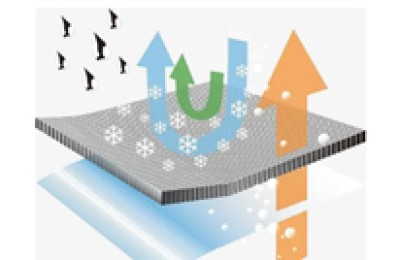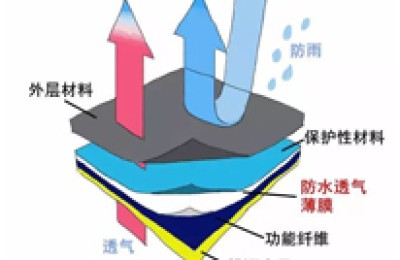In November this year, the national textile and apparel trade volume was US$26.39 billion, a year-on-year decrease of 1.4%, of which exports were US$24.34 billion, a year-on-year decrease of 0.5%, and imports were US$2.05 billion, a year-on-year decrease of 11.1%. The trade surplus for the month was US$22.29 billion. An increase of 0.6%; the cumulative trade volume of textiles and clothing from January to November was US$297.03 billion, an increase of 5%, of which exports were US$272.82 billion, an increase of 5.7%, imports were US$24.21 billion, a decrease of 2%, and the cumulative surplus was US$248.61 billion, an increase of 6.5%. .
Export
Exports to Europe, America and ASEAN maintain growth
Japan, Hong Kong and Russia have become the “hardest hit areas” for decline
In sharp contrast to the rapid growth in October, my country’s textile and apparel exports fell by 0.5% in November. This is the second negative growth this year except February. Affected by this, my country’s cumulative export growth dropped from 6.4% in October to 5.7%. The reason for the decline is, on the one hand, a large year-on-year base (November last year was the small peak of exports that year, with a year-on-year increase of 16.6%), and on the other hand, it also indicates that exports will face pressure at the end of the year. Imports showed negative growth for the fifth consecutive month, and the decline reached 11%. For the first time this year, both imports and exports fell. General trade exports declined, while small-scale border trade bucked the trend and grew. In November, general trade and processing trade exports all declined, with a decrease of 0.7% and 10.4% respectively. Small-scale border trade bucked the trend and grew by 20.3%. From January to November, the cumulative exports of general trade were US$206.79 billion, an increase of 6%, processing trade decreased by 2.3%, and small border trade increased by 3.9%.
On the slowdown in EU growth
Exports to the EU in November were US$4.27 billion, an increase of 4.7%. The growth rate slowed down from the previous period, but it still maintained growth, supporting overall exports. From January to November, my country’s cumulative exports to the EU were US$53.58 billion, an increase of 14.8%, of which textiles increased by 10.5% and clothing increased by 16.8%. The total export volume of knitted and woven garments increased by 12.7%, and the average export unit price increased by 4.1%.
Slight growth for the United States
Exports to the United States in November were US$3.38 billion, an increase of 0.2%. From January to November, my country’s cumulative exports to the United States were US$41.03 billion, an increase of 7.4%. Among them, textiles and clothing increased by 6% and 7.9% respectively. The total exports of knitted and woven apparel increased by 4%, and the average export unit price increased by 3.8%.
Strong growth in ASEAN
Exports to ASEAN continued to grow in November. Exports for the month were US$3.44 billion, an increase of 11%. Driven by a 28% increase in fabrics, the growth rate of textiles exceeded that of clothing. From January to November, cumulative exports to ASEAN were US$32.55 billion, an increase of 6.2%. Exports of bulk export commodities fabrics and yarns increased by 10.5% and 9.2% respectively, and finished products increased by 14.2%. The export volume of knitted and woven clothing increased by 9.1%, and the average export unit price decreased by 9.4%.
The continued decline in Japan
Exports to the EU, the United States and ASEAN continued to grow in November, with declines mainly concentrated in Japan, Hong Kong and Russia. These three markets contributed 3.6 percentage points to overall exports. Among them, Japan fell for the 10th consecutive month, Hong Kong fell for the 11th consecutive month, and Russia turned from an increase to a decrease, with a decrease of 19% that month.
Import
Clothing imports fell for the first time this year
Cotton spot transactions are light
Textile exports increased by 0.9% in November, while clothing fell by 1.3%. Among textiles, only fabric exports increased by 5%, while yarn and finished products decreased by 8.5% and 1.7% respectively. The total export volume of medium-needle woven clothing increased by 0.8%, and the average export unit price decreased by 1.8%. From January to November, the exports of textiles and clothing were US$102.43 billion and US$170.39 billion respectively, an increase of 5.3% and 5.9% respectively. All major categories of commodities achieved growth, among which the export volume of knitted garments increased by 7.3%, and the average unit price of exports decreased by 1.3%. In November, textile imports fell by 13.1%, falling for the seventh consecutive month. Clothing imports fell by 3.4%, the first decline this year. In textiles, yarn, fabrics and finished products decreased by 14.3%, 14.3% and 8.1% respectively. Yarns and fabrics both fell in volume and volume; medium-needle woven garments fell by 1.1% in total, which was mainly due to a large drop in import unit prices, while import volume increased by 31%. From January to November, the cumulative import of textiles dropped by 6.5%, of which yarn and fabrics dropped by 8.4% and 10.1% respectively, and finished products increased by 5.2%. Clothing increased by 16.6%, of which 490 million pieces of large categories of needle and woven clothing were imported, an increase of 62.4%, and the average unit price of imports decreased by 26.4%.
In November, textile companies maintained low inventories of raw materials, overall cotton spot transactions were light, and the market continued to decline. The average price of China’s cotton price index in November was (CCIndex3128B) 14,685 yuan/ton, a month-on-month decrease of 163 yuan. The monthly average price of China’s imported cotton price index FCIndexM was 71.78 cents/pound, a month-on-month decrease of 3.02 cents. The discounted RMB 1% tariff and sliding tax were 11,289 yuan/ton and 13,704 yuan/ton respectively, which were lower than the Chinese cotton price index of 3,396 yuan and 981 yuan respectively in the same period. The price difference expanded by 320 yuan and 101 yuan compared with the previous month. In November, cotton imports remained low, and the decline further expanded. Imports in the month were 92,000 tons, a decrease of 47%, and the average unit price of imports also expanded to 15.6%. From January to November, the cumulative import volume was 2.176 million tons, a decrease of 38.5%, and the import unit price increased by 2.5%.
Import statistics of major markets
The growth rate of EU imports from China is lower than the average
According to EU customs statistics, from January to October this year, the EU imported US$115.97 billion in textiles and clothing from the world, an increase of 9.6%. The EU’s total textile imports amounted to US$27.32 billion, an increase of 10.2%, and clothing imports amounted to US$88.65 billion.�� yuan, an increase of 9.5%. The cumulative import of textile and clothing products from China was US$43.88 billion, an increase of 7.7%, which was lower than the average growth rate. Textile and apparel imports from ASEAN amounted to US$10.27 billion, an increase of 13.5%. China’s textile and apparel market share in the EU was 37.8%, a year-on-year decrease of 0.7 percentage points, and the ASEAN market share was 8.9%, an increase of 0.3 percentage points from the same period last year. The market shares of Turkey and Bangladesh accounted for 13.4% and 11.3% respectively, with little fluctuation year-on-year.
U.S. import growth from ASEAN slows down
According to U.S. Customs statistics, from January to October this year, the United States imported US$99.9 billion in textiles and clothing from the world, an increase of 3.3%. Among them, textile imports were US$22.71 billion, an increase of 4.2%, and clothing imports were US$77.19 billion, an increase of 3%. Textile and apparel imports from China amounted to US$37.57 billion, an increase of 1.8%. Imports from ASEAN amounted to US$19.22 billion, an increase of 4.7%. The market share of Chinese products in the United States was 38.3%, down 0.5 percentage points from the same period in 2013. ASEAN’s market share in the United States was 19.2%, an increase of 0.2 percentage points from the same period in 2013.
Japan’s single-month import decline expands
According to Japanese customs statistics, Japan’s textile and clothing imports continued to decline, falling by 9.9% in September, and the decline magnified again. From January to October this year, Japan’s total imports of textiles and clothing were US$34.16 billion, a decrease of 4.7%, of which textile imports were US$7.54 billion, an increase of 3.4%, and clothing imports were US$26.62 billion, a decrease of 6.8%. Imports from China were US$23.03 billion, a decrease of 9.8%, and imports from ASEAN were US$6.23 billion during the same period, an increase of 12.6%. The share of Chinese products in the Japanese market dropped to 67.4%, a decrease of nearly 4 percentage points from the same period in 2013. ASEAN’s market share in Japan rose to 18.2%, an increase of nearly 3 percentage points from the same period in 2013.



